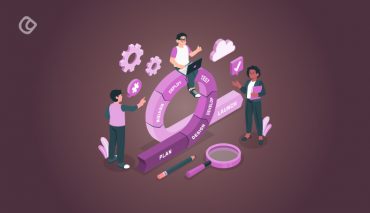Has your IT support recently reported a sudden fall in website traffic? Chances are that your website has kept your viewers waiting for too long. In a world, where users are flooded with a wealth of options, a wait of more than six seconds can lead them to think of the hundreds of other options flailing frantically for their attention. What are you waiting for? Pull up your socks and think of what you can do to win back your viewers with an optimized site. Here are three helpful tips on how to improve your website page loading time .
Organize your codes
Page size is one of the primary culprits to hinder page loading speed. Make sure that all your pages are stripped of redundant lines of code. Dirty coding can end up in increasing the page size. Clean up your page to ensure that it takes lesser time to load.
Another intelligent way of handling your codes is to practice segregation. If you plan to use Javascript or CSS in your code, then keep them in separate folders. This will ensure the scripts will be a one time download. Every page using these scripts can easily reference the downloaded code, thereby considerably reducing download time.
Optimize your images
While you are involved in cleaning up your code, you might also consider working on your images. As images occupy a substantial portion of your website content, it is very important that you ensure that they are stripped on all unnecessary bells and whistles to reduce download time. Some of the best practices you can follow to optimize images are provided below. Take a look.
- Trim your images of all extra white space. The space created to act as a padding between two images or texts can be easily handled by CSS and remember you are keeping the CSS in a separate document so there is no way your page will get overloaded.
- Opt for a suitable file format that will help to keep the file size under control. GIF and 8-bit PNG, are good options if you are using flat images; JPEG and 24-bit PNG, are suitable if you are using high quality photographs or artwork. Try and use lesser colors in your images to reduce the file size. Image-editing tools like Photoshop have in built options that help you to optimize images for use on the Web.
Utilize Content Delivery Networks
Installing a Content Delivery Network (CDN) could be a good idea to reduce your web page load times. CDN or edge servers as they are also known are extremely helpful in reducing the latency or the waiting time for web pages. These are basically server networks that are located in different geographical areas that store pages as cache copy. Users while requesting for pages access these servers which display information quickly, thereby reducing waiting time by eliminating routing issues and geographical distance.
CDN’s are not free nor are they easy to set up. Nevertheless, given the benefits they provide, it is imperative that you avail one to help your business win back your lost traffic.
There are several tools available in the market, namely, GTMetrix, Pingdom, Webpage Test, and Load Impact that helps you to keep track of your web page performance. Investing in those will help you be prepared and avoid last minute surprises such as these.
Looking for a good team
for your next project?
Contact us and we'll give you a preliminary free consultation
on the web & mobile strategy that'd suit your needs best.





